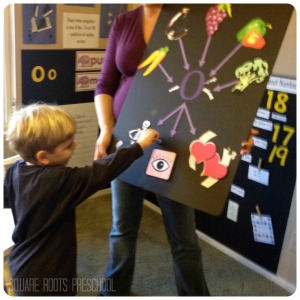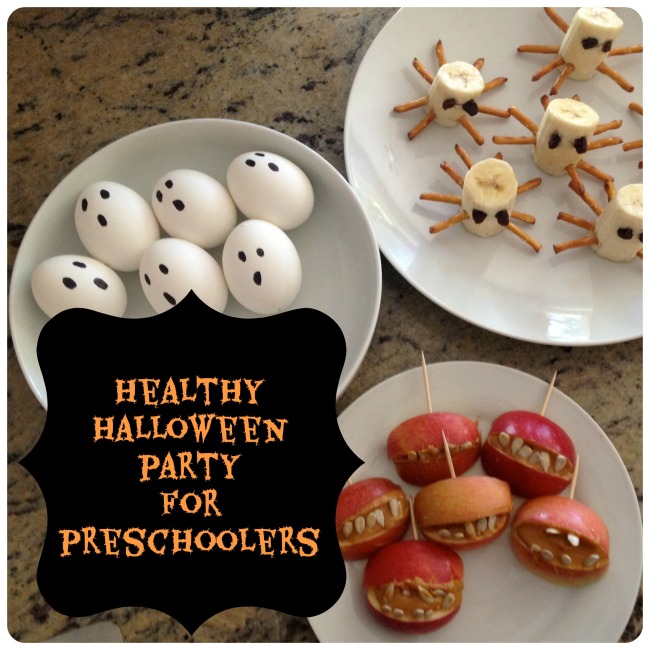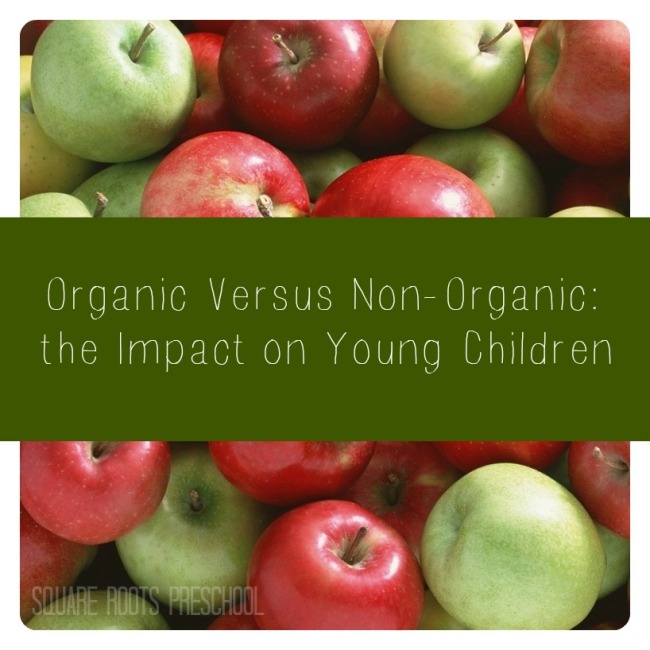We always incorporate a nutrition discussion during snack time, and we are lucky that one of our parents is a registered dietician. Christine Reese, MS, RD, comes to the classroom about once a month and speaks to the students about an aspect of nutrition. Some of the concepts can be quite complicated, so Ms. Reese simplifies the lesson and provides colorful, interactive visuals to help the students retain the information. The children look forward to her talks and to the delicious snacks she brings! Ms. Reese sends home a handout filled with detailed information for the parents.

One of our students moves the skeleton’s joints, helping to understand that anti-oxidants help our joints.
Our letter of the week was “Oo,” so Ms. Reese discussed anti-“O”xidants. She provided us with valuable information:
Anti-oxidants are substances that help fight free radicals. Free radicals are elements produced in our bodies every day, for a variety of reasons. Normal bodily functions, such as breathing and generating energy; lifestyle choices, like smoking, excessive drinking, and even exercise; and external factors like environmental pollutants, pesticides, and x-rays, all create free radicals. If these free radicals are left alone, they attack healthy cells and cause damage to DNA, blood vessels and other tissues, leading to conditions such as early aging, cardiovascular disease, cataracts, arthritis, loss of cognitive function, and even cancer. This is a process called oxidation, and anti-oxidants protect healthy cells by binding and neutralizing the free radicals. For example, when you slice an apple, oxidation causes the apple slices to turn brown. However, rubbing the slices with lemon juice prevents oxidation from occurring, and hence prevents the browning/damage.
Fortunately for our preschoolers and us, nature provides numerous anti-oxidants:
Vitamin C–Necessary for growth and repair of body tissues; important to collagen formation, which is a protein found in skin, tendons, ligaments, blood vessels; helps regenerate vitamin E. Can be found in strawberries, peaches, kiwi fruit, citrus fruit, bell peppers, broccoli, potatoes
Vitamin E–Stops the formation of free radicals when fat cells are oxidized; prevents blood from clotting within blood vessels. Can be found in nuts, seeds, oils, spinach, wheat germ, peanut butter
Carotenoids (beta-carotene, lycopene, lutein, zeanxanthan)–Protect vision and eye health; maintain skin health. Can be found in tomatoes, sweet potatoes, winter squash (acorn, butternut), carrots, watermelon, guava, mango
Glucosinolates–supports liver in detoxfying cancer-causing chemicals. Can be found in brussels sprouts, broccoli, broccoli sprouts, kale, collards, bok choy
Catechins–Aid in the repair of damaged DNA; inhibit oxidation of LDL-cholesterol. Can be found in tea, dark chocolate, apple, grapes, raspberries, avocados.
Anthocyanins–Modulate cellular pathways and signaling, which may prevent cancerous cells from forming or growing. Can be found in purple or concord grapes, purple onions and cabbage; purple peppers and potatoes; eggplant; blueberries and blackberries.
Something else anti-oxidants have in common is that they are mainly found in plant foods, especially colorful produce, and is why nutrition experts often tell us to feed our kids a rainbow of foods every day. There are no specific daily requirements at this time, perhaps because researchers are still learning about them, but also because there are so many. When it comes to actual food, you cannot eat too many anti-oxidants, however, it is possible in some cases to consume too much in the form of supplements. Therefore, at this time, it is best to get anti-oxidants from food, especially because they appear to work best when they come from food. For example, anti-oxidants and other food constituents work synergistically to protect healthy cells and fight damaging free radicals, whereas supplements taken alone do not have the other food constituents in the just the right amounts to help them out, and can easy overwhelm our cells. In addition, no single anti-oxidant can offer the protection of anti-oxidants working together, and typically more than one anti-oxidant is found in each plant food.
Ultimately, the “more matters” slogan for fruit and vegetables is applicable for a variety of reasons, one being to ensure adequate anti-oxidant consumption for better long-term health, and as parents and educators, we can plant the seed for preschoolers now.


 Every day at snack time we talk about the healthy foods we are eating and why they are healthy. Once a month, we are treated to a very special nutrition discussion and snack by one of our parents who is a dietician. Since we are studying the letter “K” this week, we she talked all about Vitamin “K.”
Every day at snack time we talk about the healthy foods we are eating and why they are healthy. Once a month, we are treated to a very special nutrition discussion and snack by one of our parents who is a dietician. Since we are studying the letter “K” this week, we she talked all about Vitamin “K.”

